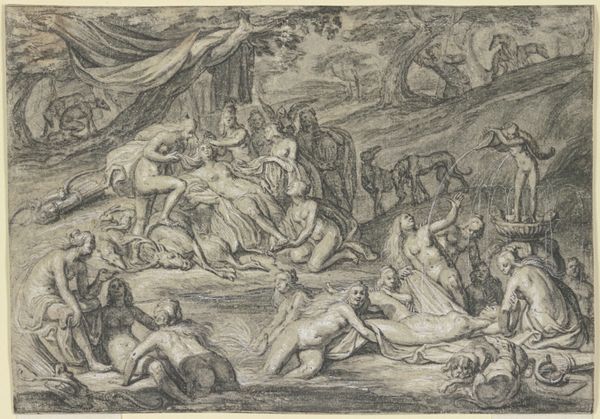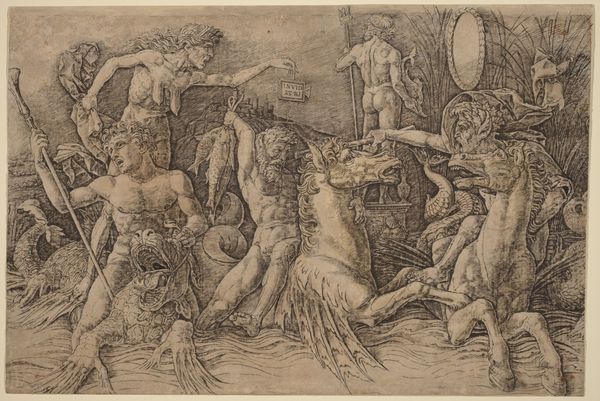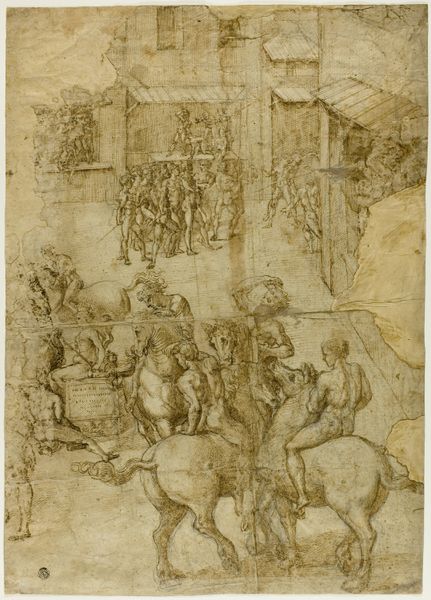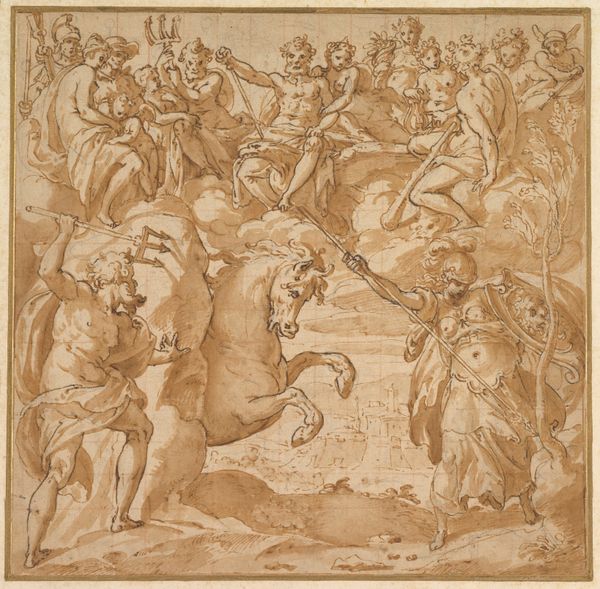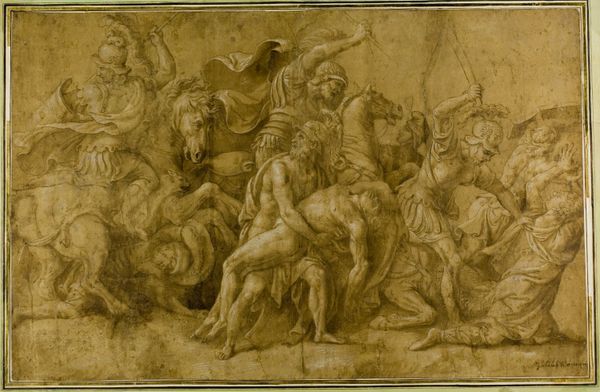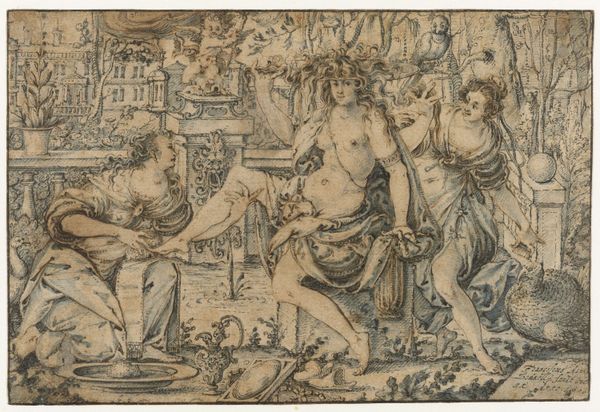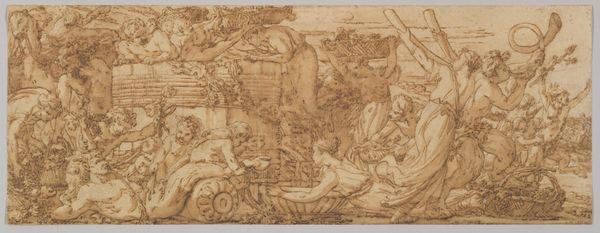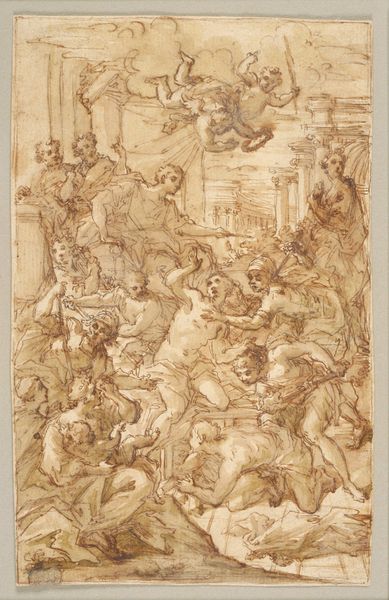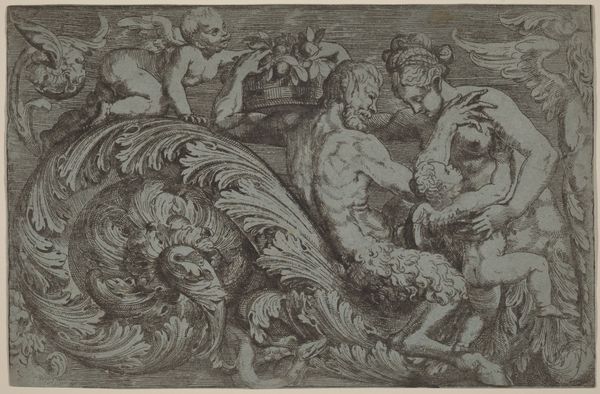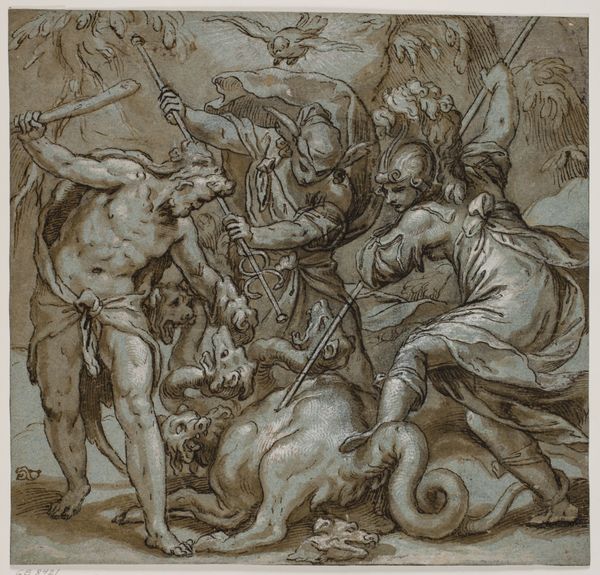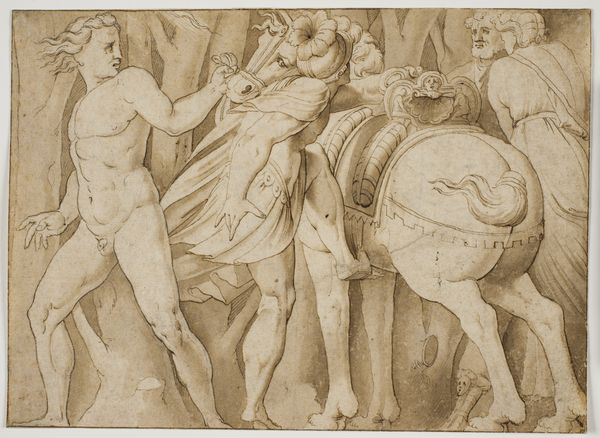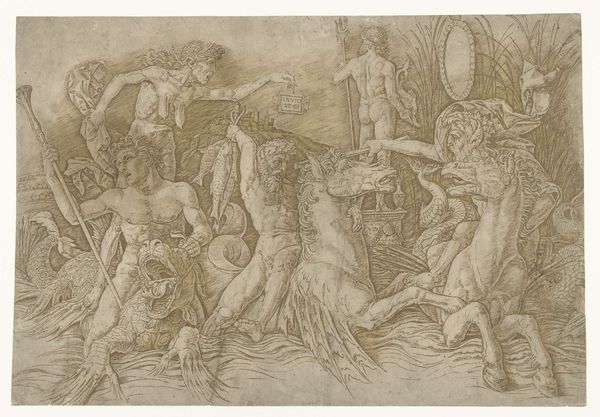
drawing, print, gouache, paper, ink, charcoal
#
drawing
#
ink painting
# print
#
gouache
#
charcoal drawing
#
figuration
#
paper
#
11_renaissance
#
ink
#
charcoal
#
history-painting
#
academic-art
Dimensions: 272 × 418 mm
Copyright: Public Domain
Editor: Here we have “Battle of the Lapiths and Centaurs,” by Enea Vico. It’s an undated print made with ink and charcoal on paper, and the scene it depicts is quite chaotic. What catches your eye when you look at it? Curator: Well, considering Vico was an engraver, it's fascinating to think about the process he undertook to translate this violent scene into a reproducible image. Look closely at the lines – the varying pressure he applied with the burin on the copperplate. Each line represents a physical act, a decision about light, shadow, and the emotional impact of the narrative. Think about the socio-economic conditions necessary to even produce a print like this; the availability of materials like paper, ink and metal. Also the workshops involved in its production. What does that materiality say to you? Editor: I hadn't thought about it that way. The printmaking process itself adds another layer of meaning. I was initially focused on the figures and the story being told. Curator: Precisely. It's easy to get lost in the mythological narrative, but what about the labor involved in its creation? And how that labor connects to broader systems of patronage and dissemination of knowledge at the time? The availability and affordability of such prints played a crucial role in the Renaissance's artistic developments, by democratizing access to images, fostering stylistic exchange. Can you see evidence of other artists' influence on Vico in the image’s form and structure? Editor: Now that you mention it, seeing those classically-inspired figures through the lens of reproductive printmaking brings to mind ideas around authorship and value in art at that time. This artwork does seem to participate in and further broader visual culture of the Renaissance. Curator: Exactly. It compels us to reconsider traditional art historical narratives that often prioritize painting and sculpture by shifting focus to more ‘modest’ media of paper, ink and metal, to better account for the production and making of art within the contexts of labor, materiality, and consumption. Editor: This gives me a totally new way of looking at prints. Thank you. Curator: My pleasure.
Comments
No comments
Be the first to comment and join the conversation on the ultimate creative platform.
